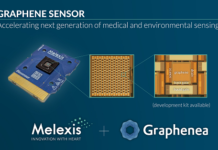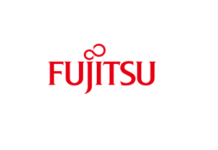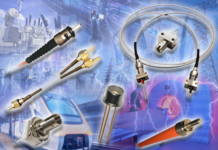
The global manufacturing landscape is undergoing a profound transformation, driven by rapid advancements in Industrial IoT (IIoT) sensors and intelligent connected technologies. As we move deeper into 2025, manufacturers across industries from automotive and electronics to oil & gas and FMCG are leveraging IIoT to strengthen real-time visibility, boost operational efficiency, and maximize ROI.
This shift toward a sensor-driven ecosystem is no longer a futuristic concept; it has become a strategic priority for enterprises striving to stay competitive in the Industry 4.0 era and prepare for the emerging Industry 5.0 landscape. In this article, we explore how IIoT sensors and advanced technologies are reshaping manufacturing, what benefits they bring, and why they are essential for building the smart factories of tomorrow.
1. The Rise of IIoT Sensors in Modern Manufacturing
IIoT sensors are the foundation of digital transformation in manufacturing. These intelligent devices collect critical data from machines, production lines, assets, and environmental conditions. By integrating this data into cloud platforms, AI/ML systems, and predictive analytics tools, manufacturers can turn raw data into actionable insights.
Why IIoT Sensors Matter in 2025:
- Provide real-time monitoring of machines and processes
- Enable predictive and prescriptive maintenance
- Improve production planning and quality management
- Support energy-efficient operations
- Reduce operational risks, downtime, and safety hazards
From temperature and vibration sensors to advanced RFID, machine vision, and environmental sensors, IIoT devices are now the backbone of smart manufacturing.
2. Key IIoT Technologies Transforming Manufacturing
The real value of Industrial IoT emerges when sensors are combined with intelligence-driven technologies. In 2025, global manufacturers are rapidly embracing advanced systems that enable autonomous operations, real-time optimization, and seamless connectivity across production environments. Below are the core technologies powering this transformation.
a. Edge Computing for Real-Time Processing
Manufacturers can no longer depend solely on cloud infrastructure, especially for time-sensitive decisions.
Edge computing solves this challenge by processing data directly near the machines, ensuring faster responses and localized control.
Key Benefits:
- Ultra-low latency for mission-critical operations
- Faster production cycles and improved output
- Lower dependency on cloud bandwidth
- Higher security through localized data control
b. AI and Machine Learning for Smarter Insights
Artificial Intelligence (AI) and Machine Learning (ML) convert raw sensor data into strategic intelligence. These technologies help manufacturers shift from reactive decision-making to predictive, automated, and highly optimized workflows.
AI enables:
- Predicting machine failures before they occur
- Real-time energy optimization
- Identification of quality issues and production bottlenecks
- Enhanced product consistency and productivity
AI-driven anomaly detection is one of the strongest global IIoT trends in 2025, especially in high-stakes industries like automotive, aerospace, and oil & gas.
c. Digital Twins for Virtual Simulations
A digital twin is a virtual replica of a machine, process, or entire factory. When powered by IIoT sensors, it becomes a powerful simulation tool that helps manufacturers optimize operations without physical risks.
Manufacturers can simulate:
- Machine performance under different conditions
- Production efficiencies and workflows
- Quality variations and optimization paths
- Maintenance needs and lifecycle predictions
This leads to lower risk, better planning, and significant cost savings across operations.
d. 5G Connectivity for Seamless Data Flow
5G is accelerating the next phase of smart manufacturing. With ultra-fast, high-capacity connectivity, 5G enables real-time communication between thousands of sensors and devices.
5G enables:
- Autonomous robots and AGVs (Automated Guided Vehicles)
- Real-time quality checks and defect detection
- Remote monitoring and control of factory assets
- Large-scale IoT deployments across multi-site plants
3. How IIoT Is Reshaping the Future of Manufacturing (2025 & Beyond)
IIoT is not only modernizing manufacturing processes—it is creating entirely new operational models. Here are the major ways Industrial IoT is redefining the future of factories worldwide.
a. Predictive Maintenance Becomes Standard
Traditional maintenance often leads to unplanned downtime and high repair costs.
IIoT sensors enable predictive maintenance, where potential issues are identified long before equipment breaks down.
This shift leads to:
- Up to 40% reduction in unplanned downtime
- 20–25% lower maintenance costs
- Longer machine lifespan and reliability
Predictive maintenance is rapidly becoming a primary use case for global industries due to its strong ROI.
b. Hyper-Automation Through Connected Systems
Hyper-automation combines AI, IoT, robotics, and analytics to create highly automated manufacturing lines.
With hyper-automation, manufacturers can:
- Automate repetitive workflows
- Monitor assets without human intervention
- Trigger alerts and corrective actions automatically
- Enable smooth machine-to-machine communication
This leads to enhanced productivity, greater consistency, and significantly lower operational costs.
c. Enhanced Product Quality Through Smart Inspections
Smart vision systems and quality sensors now inspect products in real time, replacing manual checks.
Manufacturers benefit through:
- Consistent product quality at scale
- Reduced rejection and rework rates
- Stronger compliance with international standards
This evolution is part of the broader movement toward Quality 4.0, which is growing rapidly worldwide.
d. Energy Optimization and Sustainable Manufacturing
IIoT-powered energy sensors help factories track consumption at every stage of production.
This enables better control over costs and significantly improves sustainability.
Manufacturers achieve:
- Lower energy wastage
- Reduced carbon footprint
- Optimized usage of utilities such as electricity, steam, and water
Sustainability-driven manufacturing is now a business necessity, not just a compliance requirement.
e. Worker Safety with Wearables and Connected Devices
IIoT technology enhances worker safety through smart helmets, gas sensors, motion trackers, and geofencing systems.
This provides:
- Early detection of hazards
- Real-time tracking of worker movement
- Instant emergency alerts
- Stronger compliance with safety protocols
Worker safety is a central theme of Industry 5.0, where human-machine collaboration takes priority.
4. Real-World Use Cases Across Global Industries
IIoT adoption varies by industry but delivers powerful value everywhere. Below are some leading use cases globally.
Automotive Manufacturing
- Predictive maintenance for robotics and machinery
- Real-time quality inspection
- Energy management across production units
Oil & Gas
- Pipeline and well-site monitoring
- Gas-leak detection for safety
- Remote surveillance of hazardous sites
Textile & FMCG
- Automated production-line control
- Utility consumption monitoring
- Real-time inventory and supply chain visibility
Pharma & Healthcare
- Temperature-controlled storage monitoring
- Machine sterilization and compliance tracking
- Precision equipment performance monitoring
5. Challenges Manufacturers Face in IIoT Adoption
Despite its advantages, IIoT implementation comes with challenges that must be addressed for smooth adoption.
a. Integration with Legacy Machines
Traditional machines often lack IIoT compatibility, requiring retrofitting or system upgrades.
b. Data Security & Cyber Risks
Connected environments must be protected with strong cybersecurity frameworks.
c. Skill Gap and Workforce Readiness
Manufacturers need skilled professionals to manage, analyze, and interpret IoT-driven systems.
d. High Initial Investment
Although initial costs may be high, IIoT delivers strong long-term ROI through reduced downtime and optimized productivity.
6. Why Manufacturers Must Adopt IIoT in 2025
Global competition, rising production costs, and evolving customer expectations make IIoT adoption essential.
Manufacturers that embrace IIoT gain:
- Higher operational efficiency
- Improved product quality
- Faster decision-making
- Reduced downtime and manual effort
- Stronger customer satisfaction
- Better sustainability performance
IIoT is no longer an option — it is a strategic advantage for modern manufacturing leaders. Ignoring IIoT could mean falling behind technologically as global players accelerate digital transformation.
Conclusion: The Future Belongs to Sensor-Driven, Intelligent Manufacturing
Industrial IoT sensors and advanced technologies are no longer optional—they are essential building blocks of modern manufacturing. From predictive maintenance and digital twins to AI-driven analytics and hyper-automation, IIoT is helping manufacturers achieve unprecedented levels of efficiency, precision, and reliability. As factories move toward Industry 5.0, where human-machine collaboration becomes central, IIoT will continue to play a pivotal role in shaping the next era of global manufacturing. Enterprises that embrace these innovations today will lead the industry tomorrow.
















